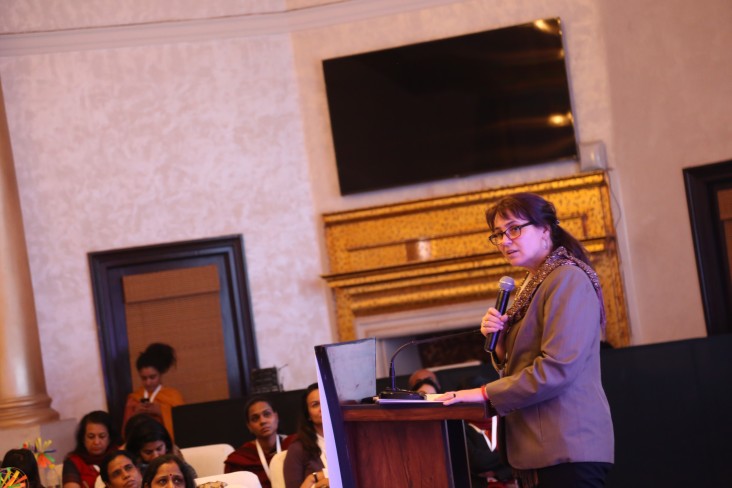India
- History
- Our Work
- Transforming Development Through Innovation & Partnership
- U.S.-India Triangular Cooperation
- Partnership for Energy Access and Security
- Partnership for Sustainable Forests in India
- Partnerships for Health
- Partnership for Education
- Partnership for Water Sanitation and Hygiene (WASH)
- Partnership for Food Security
- Partnership for Gender Equality
- Investing in Afghanistan
- Foreign Assistance Data
- Newsroom
- Newsletters and Fact Sheets
- Speeches
- Resources For Implementing Partners (RFIP)
- Careers
- Partnership Opportunities
- Success Stories
Speeches Shim

Good morning.
It’s a privilege to represent the U.S. Agency for International Development (USAID) at this event and to meet the representatives from the government, civil society organizations, and the community members who have done ground- breaking work on issues related to youth empowerment in India.
I especially appreciate having the opportunity to hear from the young people who have agreed to share their experiences and views today to inform the work we do.
With 356 million people between the ages of 10 and 24 and 256 million adolescents, India has the world’s largest young population.
We know that when adolescents have access to health services, education and employment opportunities, they make better choices for themselves, they live longer, and they participate more in society. Better opportunities for adolescents mean better outcomes for India.
However, in several countries, including India, despite significant progress, adolescents – especially girls – are still denied the investments and opportunities they need to realize their full potential. As a result, far too many adolescents cannot access the resources or services for health, education, and employment that would allow them to break the inter-generational cycle of poverty.
Discussions around gender equality, gender-based violence, and young people’s sexual and reproductive rights continue, but these challenges must become key priorities if India is to effectively leverage its demographic dividend.
The Government of India’s National Adolescent Health Program is an important step toward improving access to health, opportunities and brighter prospects for millions of adolescents in India. This program recognizes the importance of providing reproductive health services and improving access to nutrition, hygiene, life skills, violence and mental health services. This is an important step toward empowering adolescents.
However, we need to do more to reach vulnerable girls and boys in India. And we all have a role in helping to achieve this goal in partnership with the Government. We need a multi-sectoral approach in which partners – public and private – work closely to help adolescents reach their full potential.
USAID believes that an enhanced focus on adolescents and youth is vital to our ability to achieve global development goals. We believe that there is no greater investment than the investment we make in our young people.
USAID works to promote and advance evidence-based, high impact practices such as community engagement and keeping girls in school to improve reproductive health outcomes for young people.
USAID strives to improve the capacity and enable the aspirations of youth so that they can contribute to and benefit from stable, democratic, and prosperous communities and nations.
The 10 to 19 Collaborative has been co-created with the government to align with its National Adolescent health Program priorities. It serves as a platform to demonstrate outcome driven innovative models to address gap areas in the program, foster a learning community, and build evidence for scale up and sustainability of adolescent programs in India.
We value our partnership with the Government of India and I want to thank you for all of your efforts in making strides to create a better world for young people.
We know that the most successful and sustainable work done in the field of adolescents and youth needs to leverage community engagement, the participation of men and boys, and meaningful partnerships between government, development organizations, and the private sector, and most importantly young people themselves.
This forum is a great opportunity to ensure we hear the voices of young people and to highlight the ways that our work is engaging youth to ensure that the next generation of women and girls achieves greater gender equality.
The way we treat one another and the way families behave together builds an expectation that’s handed down through generations. In India, one third of married women report that they have suffered gender-based violence. When children in those homes see this behavior, they later replicate it.
I know some of the young people we have here today will talk more about this, and I look forward to hearing about their perspective on how we can break unhealthy cycles, what they think the future can look like and how best to get there.
I appreciate the outstanding work done by the people in this room to help adolescents stay healthy, make the right choices, live in safety, without fear of gender-based violence, to enjoy protection under the law, and to help them to develop new assumptions about what gender equality can look like.
USAID is excited to work with all of you on this effort and committed to supporting India’s adolescents.
Again, thank you for inviting me to be here today.
Related Speeches
- Deputy Administrator Glick's Remarks at the AJC Virtual Summit on U.S.-India-Israel Relations
- Remarks by Acting Mission Director Ramona El Hamzaoui at the Workshop on Regional Cooperation for Modernization of Power Distribution in South Asia
- Remarks by Acting Mission Director Ramona El Hamzaoui at the Antimicrobial Resistance Summit: One World, One Health, One Fight

Comment
Make a general inquiry or suggest an improvement.